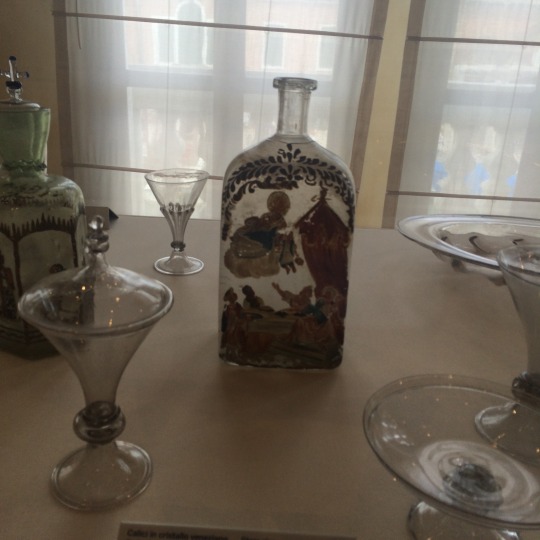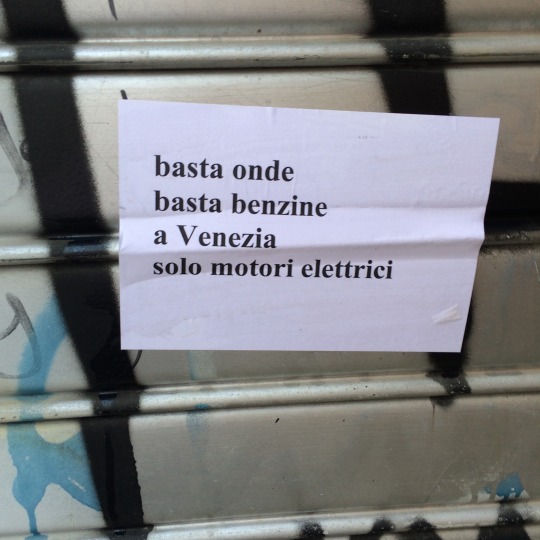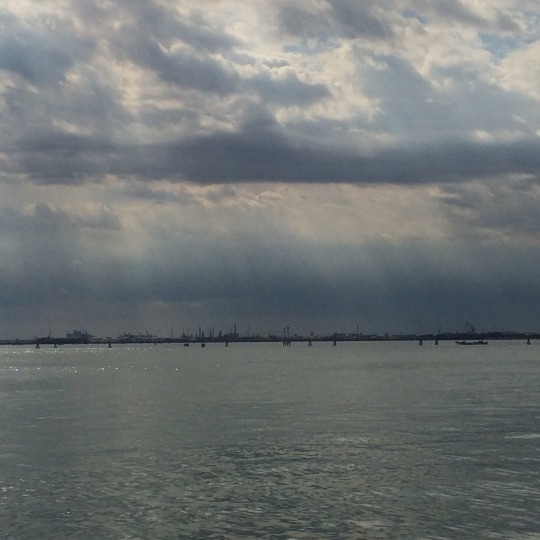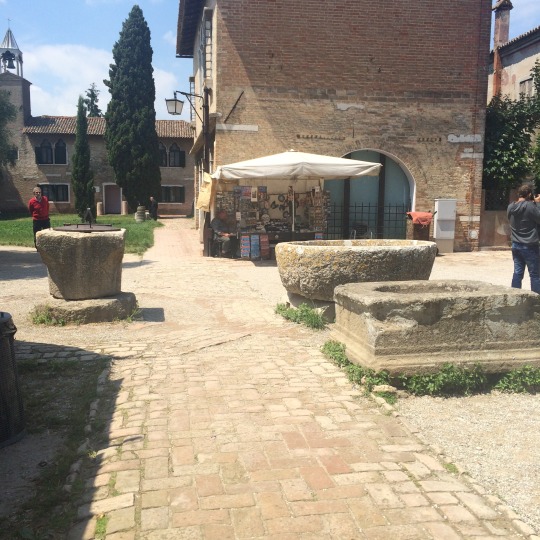– "Besides utter cynicism Las Vegas has not taught us much." – Henry Marceau - La Passante Inconnue and the Flaneur are back in Venice – the Blog introducing the LFV Project – www.learningfromvenice.com
Don't wanna be here? Send us removal request.
Text
museo del vetro





Quite a nice museum, with a beautiful courtyard / garden
2 notes
·
View notes
Photo

Venetians are still waiting for the tesla boat.
1 note
·
View note
Text
the sun shining through clouds in venice

2 notes
·
View notes
Text
The Venice Biennale 2016
A very eloquently elaborated review of the 2016 Archtecture Biennale by Tom Wilkinson in The Architectural Review, 23 June 2016. “(...) The question of course is not whether architects should try to change the world for the better, but whether this exhibition contributes much to the endeavour. As with all such grab-bags, it’s rather hard to say – so much is going on here, and so much of it is either banal, bad, or irrelevant. There are also many gems, the most highly polished of which attain the elusive goal of exhibiting architecture with aplomb – the Swiss pavilion, for instance, which consists of a huge, hollow rock formation that you can clamber inside. (...)” http://www.architectural-review.com/archive/viewpoints/learning-from-venice/10007932.fullarticle
0 notes
Text
Torcello is a quiet and sparsely populated[1] island at the northern end of the Venetian Lagoon. It is the oldest continuously populated[citation needed] region of Venice, and once held the largest population of the Republic of Venice.
https://en.wikipedia.org/wiki/Torcello
Torcello Escape
Even more laid back than Murano and Burano, Torcello is the place to go if you need some peace of mind. Beautiful vegetation and generally very low density, but still, if you want to, you may discover many stories from a city (once holding the largest population of the Republic of Venice) that has disappeared.




1 note
·
View note
Photo

Scuola Grande die San Marco al Campo San Giovanni e Paolo. Built in 1260, rebuilt after fire in 1485 designed by Pietro Lombardo. Marble Work by Mauro Codussi. Now a civil hospital of Venice.
https://en.wikipedia.org/wiki/Scuola_Grande_di_San_Marco
0 notes
Photo



late night arrival in venice
0 notes
Photo

The New Zealand Pavillion 2015 by Simon Denny at the Biblioteca Nazionale Marciana is quite notable. “Secret Power” visualizes strings, connections and timelines within the global security apparatus, in a way never seen before. Special spotlight also on logo and batch designers and other creative industry professionals heavily involved in shaping the internal, inoffical and official look of different agencies, committees and task forces.
more at http://www.nzatvenice.com/
0 notes
Text
Jan Gehl Interview
Danish urban planner Jan Gehl talks about the human scale, carfree cities and public transport.
http://www.tageswoche.ch/de/2015_12/basel/683236/
and an interesting read, first published in 1980

0 notes
Photo

Hermann Knoflacher, Vienna, Essay "Das Auto im Kopf" in "Postfossile Mobilität", politische ökologie, june 2014, oekom verlag
0 notes
Text
"Wettingen is everywhere"
How can we deal with the existing urban sprawl? Benedikt Loderer, Founder of the magazine Hochparterre suggests to have a closer look at Bernhard Hoeslis work on Wettingen.

Loderers own take in Hochparterre 10/14 on the theme "Agglomeration" - on which the other swiss publication "Werk Bauen + Wohnen" dedicated a whole issue without being able to find any answers - begins with: (citation / ad-hoc translation from german) "We are clueless. Already since 1960. Since then we must admit that 'die Moderne' doesn't work. We build urban sprawls (Agglomerations), but no cities anymore. We can see the result of the urban sprawl everywhere. That is the city of the 20th century. We know that and we are trying to develop the city of the 21st century. Without success. We have tried so much: first the garden city of Ebenezer Howard and Le Corbusiers Ville radieuse, the main ideas of modernity. Later we tried megastructures, the Plug-in-City, then composite systems and participative processes including Do-it-yourself, finally Port Grimaud and Seldwyla. Agglomerations of buildings were the result, but not a city. (...)"
0 notes
Quote
I LIKE TO WALK AROUND outside because life in a box gets dull.
—Essay by Salvatore Folisi — I LIKE TO WALK AROUND outside because life in a box gets dull. I walk wherever I can, on streets and sidewalks through neighborhoods right on down through town, and on the beach or in the woods where it is quieter and more beautiful. It’s good to get outside, to smell the fresh air, to feel the sun or the night sky, listen to the birds or the crickets, to see and sense the surrounding world, and sometimes even say “hello” to other people. (…) http://carbusters.org/2013/05/08/walking-the-car-or-driving-your-body/
0 notes
Text
Brodsky in Venice
An Essay by Joseph Brodsky appeared in 1992 in the New York Review of Books "The winter light in this city! It has the extraordinary property of enhancing your eye’s power of resolution to the point of microscopic precision—the pupil humbles any Hasselblad lens and develops your subsequent memories to National Geographic sharpness. The sky is brisk blue, the sun, escaping its golden likeness beneath the foot of San Giorgio, sashays over the countless fish scales of the lagoon’s lapping ripples; behind you, under the colonnades of the Palazzo Ducale, a bunch of stocky fellows in fur coats are revving up Eine Kleine Nachtmusik, just for you, slumped in your white chair and squinting at the pigeons’ maddening gambits on the chessboard of a vast piazza. The espresso at your cup’s bottom is the only small black dot in, you feel, a miles-long radius...."
http://www.nybooks.com/articles/archives/1992/jun/11/in-the-light-of-venice/
A longer essay by Joseph Brodsky in 48 chapters was published in 1989 under the title Watermark
http://www.theguardian.com/books/2013/mar/22/watermark-essay-venice-review1
0 notes



